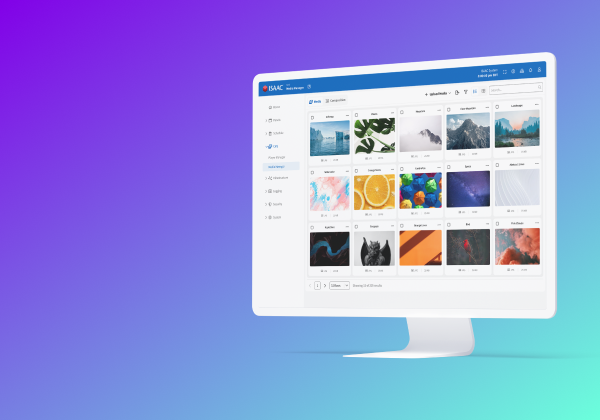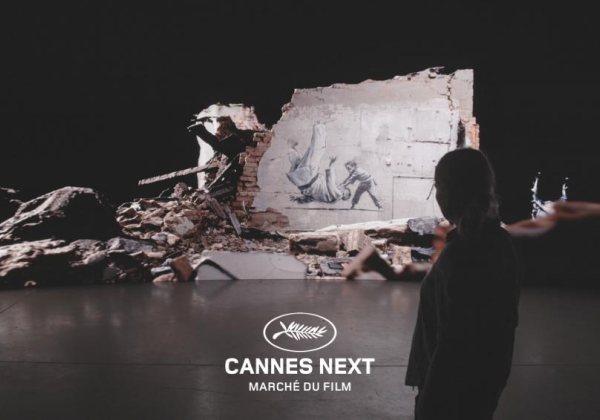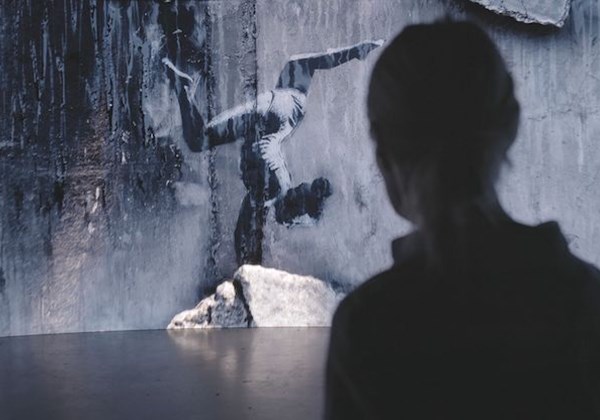
news 2022 4 min read
Dubai’s Al Wasl Dome hosts world’s largest interactive installation
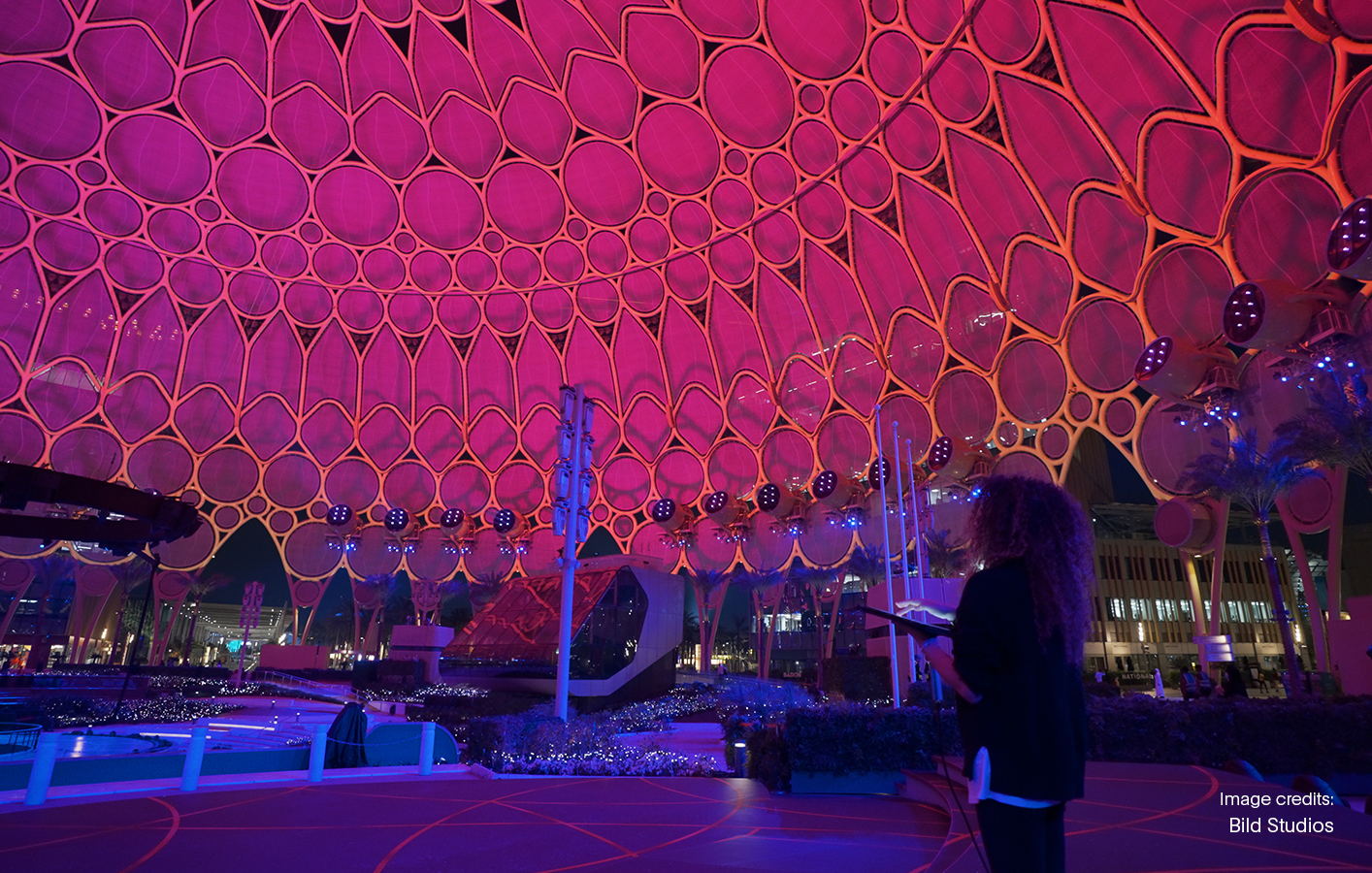
A complement of 16 disguise gx 2 media servers helped London-based Bild Studios turn the world’s largest and most complex 360º projection installation into the biggest global interactive audiovisual experience. Working closely with the creative team of Al Wasl Dome, Bild used its extensive knowledge of real-time workflows, video engineering and creative design to create the installation which runs real-time Notch content across a 27,000 x 6,000-pixel canvas in the Al Wasl Dome.
Built for Expo 2020 in Dubai, the 360º translucent Al Wasl Dome was known as the crown jewel of Dubai’s international Expo 2020 which kicked off in October 2021. When the Expo closed at the end of March 2022, the site transitioned to Expo City, an integrated mixed-use community with the iconic Al Wasl Dome at its heart. Anyone creating content for the dome today will use the workflows that Bild established to achieve a real-time graphics solution displaying pre-rendered Notch content in the massive space.
This could not have been possible on any other platform other than disguise. The project combined all the advanced features required for the existing projection systems together with cutting-edge integration with Notch, a modern touch interface and interactive audio design.”
David Bajt, Co-founder and Director at Bild Studios
The result was a magical interplay of colours and dynamic real-time Notch graphics mapped onto the beautifully patterned surface of the dome.
When Bild took on the project, they tackled the challenge of synchronising real-time Notch graphics among 11 disguise gx 2 Actor servers. A total of 252 projectors, with 84 unique HD channels, were required for the installation along with 27 line array speakers for full surround sound audio. Control from an iPad interface, also designed and engineered by Bild, allowed for last-minute user customisation and the ingestion of new content to the disguise servers while simultaneously updating the app.
“In essence, each of the 11 gx 2 Actors would only render its assigned area of the dome,” explains Bajt. “By dividing the 27,000 x 6,000 pixel canvas into 11 regions, each server would only have to render about 7,000 x 2,000 pixels. It was still a high resolution for real-time content, especially when we also had to make sure that all the graphics would sync between adjacent server regions. As such, the Bild team had to carefully test each look and continuously develop them to fit within the performance of the gx 2 servers.”
In order to pre-test sync and performance, a limited number of gx 2s were installed in Bild’s London office with a Director server and two Actors set up to mimic the dome’s on-site environment.
From its inception, disguise Solutions Director Peter Kirkup and disguise Software Architect Tom Whittock supported the project. They improved the Multimapping feature that allowed Bild to combine all 11 regions into one canvas while enhancing other existing features to suit the needs of the project.
A key new feature was disguise Indirections, which permitted video and image content stored in a disguise project to be accessed and switched on the fly from the iPad. Indirections also enabled images to be automatically pushed to the iPad and represented as thumbnails, with no need to update the app itself.
“With this feature, users could change the texture directly from the app and choose to map it in different ways on the surface of the dome,” says Bajt. “The finger-tracking functionality of the app allowed the user to track their finger on a flattened image version of the dome. These movements were then captured in real-time as OSC coordinates, which were sent to Notch via a web server, then on to disguise and rendered as visuals directly onto the dome. For example, gigantic particle trails or massive virtual searchlights followed the movement of the finger.”
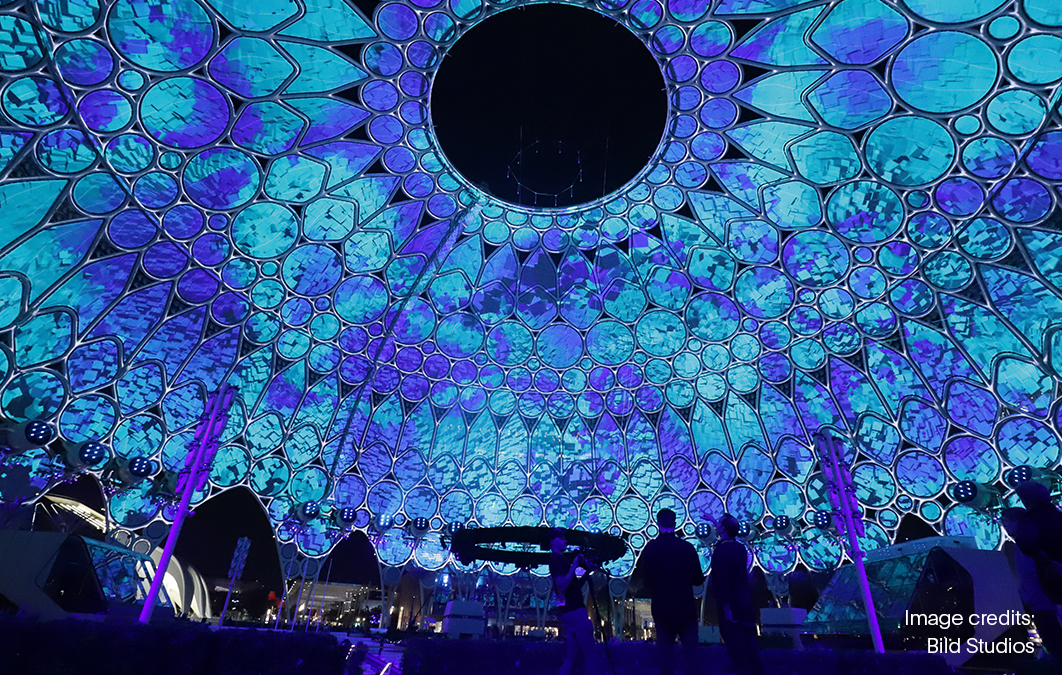
With the finger-tracking iPad app, users felt almost as if they were physically touching the dome – quite a remarkable feat given the scale of the massive structure and its vast, stunning visual effects.
“Once we started developing the project and saw the first positive test results from our office set up, I knew that this actually could turn into something really big and special,” recalls Bajt. “A long time later, when I tested the interactive app for the first time, I couldn’t believe my eyes and ears. To be able to drag your finger and see the visuals appearing in front of you on the world's largest projection surface was nothing less than pure magic.”
Credits
Bild Project Team:
Co-Founder & Principal Consultant: David Bajt
Senior Producer: Lauren Rogers
Technical Director: Jamie Sunter
Project Engineer: Rury Nelson
Software Developer: David Kanekanian
Creative Notch Lead: Lewis Kyle White
Notch Artist: Marco Martignone
Notch Artist: Michael Wilson
Notch Artist: Dave Ferner
Notch Artist: Nick Diacre
Sound Design: Gareth Fry
Expo Project Team:
Executive Creative Director: Amna Abulhoul
Senior Creative Manager: Karl Knight
Senior Creative Technologist: Charles Draper
Senior Manager - Motion Designer/Animator: Jaanus Vann
Senior Manager Broadcast & Projection: Toomas Vann
